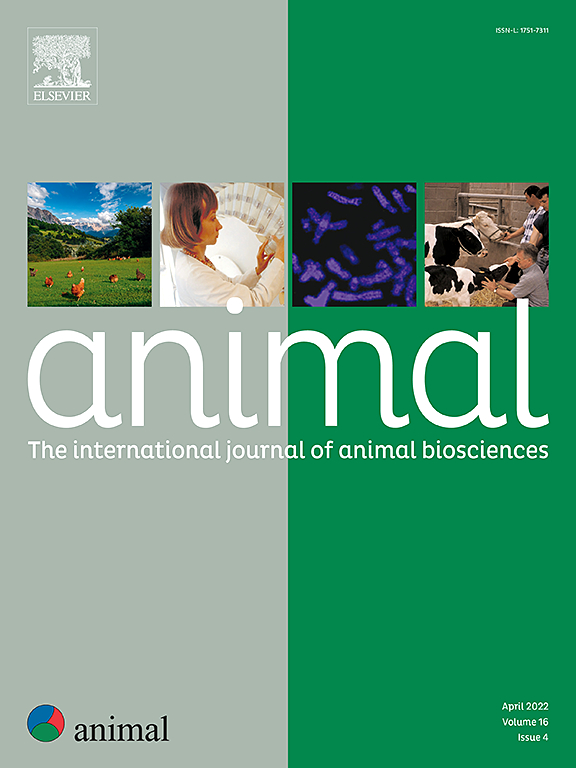Prediction of growth and feed efficiency in mink using machine learning algorithms
IF 4
2区 农林科学
Q1 AGRICULTURE, DAIRY & ANIMAL SCIENCE
引用次数: 0
Abstract
The feed efficiency (FE) expresses as the amount of feed required per unit of BW gain. Since feed cost is the major input cost in the mink industry, evaluating of FE is a crucial step for competitiveness of the mink industry. However, the FE measures have not been widely adopted for the mink due to the high cost of periodically measuring BW and daily feed intake. Measuring individual daily feed intake and BW is time-consuming, labor-intensive, and stressful for the animals and mink producers. The main objectives of this study were to (1) evaluate the application of machine learning (ML) algorithms to predict the average daily gain (ADG), feed conversion ratio (FCR), and residual feed intake (RFI) values during the whole growing and furring period (15 weeks from August 1st to November 14th) using less expensive features such as sex, color type, age, BW and length; (2) find the most significant contributing feature within the growth and furring period to predict the ADG, FCR and RFI. The color and sex features were recorded on 1 088 mink and mink’s age, BW and length were measured every 3 weeks from August 1st to November 14th which is called P1–P5. The ADG, FCR, and RFI were then predicted by the selected ML algorithms using multiple combinations of the observed and measured features from P1 to P5. By comparing the calculated ADG, FCR, and RFI values with the predicted values, it was determined that the most accurate combination of features was to include all features such as sex, color, age, BW and body length on August 1st (at the beginning of the P1). Among selected ML algorithms, the extreme gradient boosting (XGB) algorithm provided the most accurate and reliable prediction for the ADG (R2 = 0.71, RMSE = 0.10), FCR (R2 = 0.74, RMSE = 0.14), and RFI (R2 = 0.76, RMSE = 0.10). The XGB algorithm can be an accurate algorithm to predict the ADG, FCR, and RFI values without measuring costly daily feed intake. In addition, sex was identified as the most significant feature to predict the ADG, FCR, and RFI values with the importance scores of 0.85, 0.67, and 0.79, respectively.
求助全文
约1分钟内获得全文
求助全文
来源期刊

Animal
农林科学-奶制品与动物科学
CiteScore
7.50
自引率
2.80%
发文量
246
审稿时长
3 months
期刊介绍:
Editorial board
animal attracts the best research in animal biology and animal systems from across the spectrum of the agricultural, biomedical, and environmental sciences. It is the central element in an exciting collaboration between the British Society of Animal Science (BSAS), Institut National de la Recherche Agronomique (INRA) and the European Federation of Animal Science (EAAP) and represents a merging of three scientific journals: Animal Science; Animal Research; Reproduction, Nutrition, Development. animal publishes original cutting-edge research, ''hot'' topics and horizon-scanning reviews on animal-related aspects of the life sciences at the molecular, cellular, organ, whole animal and production system levels. The main subject areas include: breeding and genetics; nutrition; physiology and functional biology of systems; behaviour, health and welfare; farming systems, environmental impact and climate change; product quality, human health and well-being. Animal models and papers dealing with the integration of research between these topics and their impact on the environment and people are particularly welcome.
 求助内容:
求助内容: 应助结果提醒方式:
应助结果提醒方式:


